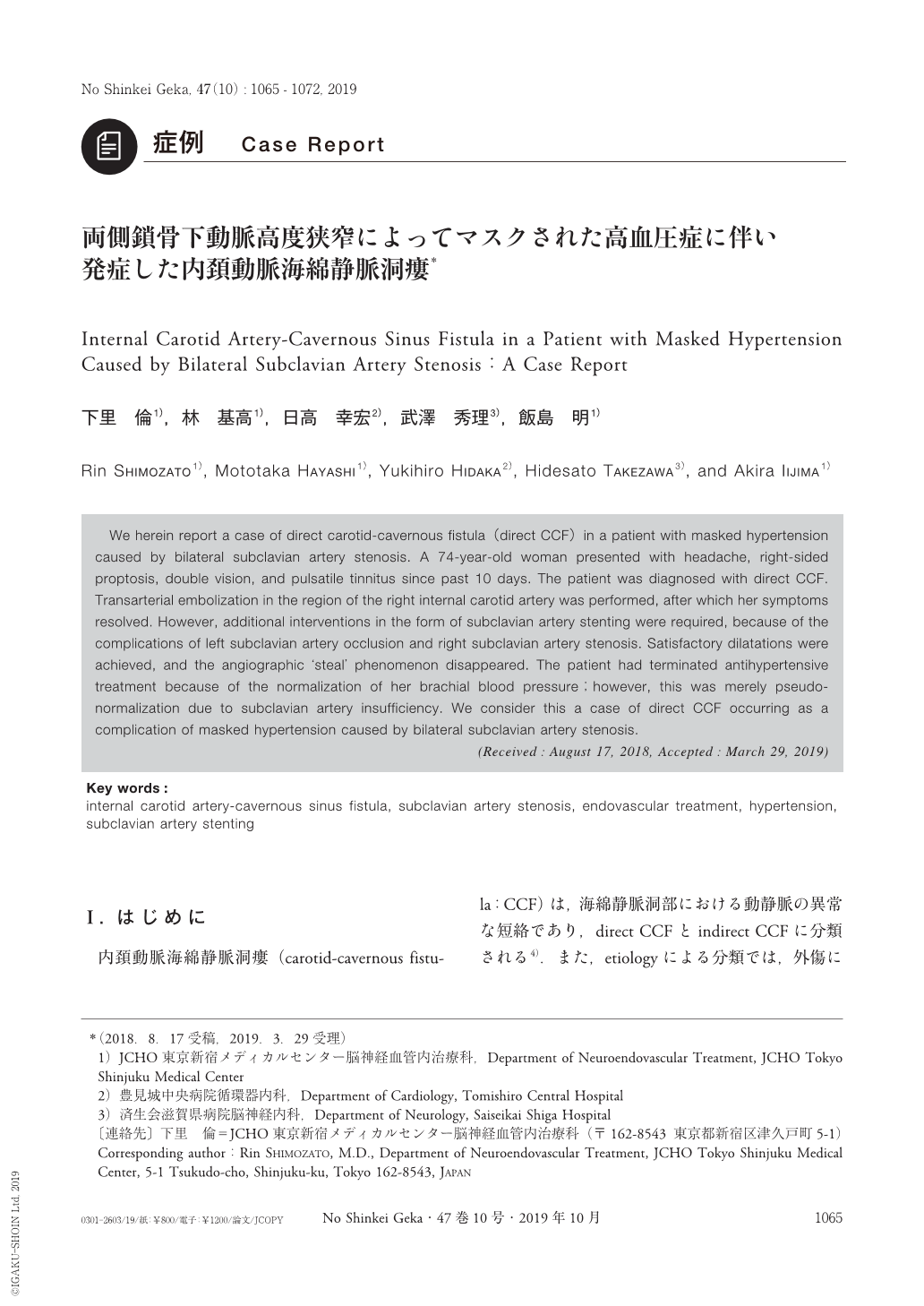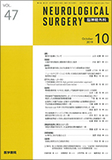Japanese
English
- 有料閲覧
- Abstract 文献概要
- 1ページ目 Look Inside
- 参考文献 Reference
Ⅰ.はじめに
内頚動脈海綿静脈洞瘻(carotid-cavernous fistula:CCF)は,海綿静脈洞部における動静脈の異常な短絡であり,direct CCFとindirect CCFに分類される4).また,etiologyによる分類では,外傷により生じたもの(traumatic),自然発生したもの(spontaneous)に分類される9).Direct CCFの中でspontaneousな病態から生じるケースはBarrow type A2,6)に分類され,多くは内頚動脈海綿静脈洞部に生じた動脈瘤の破裂が原因であり,Ehlers-Danlos syndromeのような全身性結合織疾患や全身性高血圧も誘因として知られている.破裂動脈瘤が画像上確認できず7,8),発症の原因を特定できない症例も多い.今回われわれは,両側鎖骨下動脈血流障害によってマスクされた高血圧症の下で発症したdirect CCFに対し,血管内治療を行った.瘻孔を含む内頚動脈母血管閉塞によりCCFの症状の消失,両側の鎖骨下動脈血管形成術を行うことにより上肢血圧の正常化を得た症例を経験したので報告する.
We herein report a case of direct carotid-cavernous fistula(direct CCF)in a patient with masked hypertension caused by bilateral subclavian artery stenosis. A 74-year-old woman presented with headache, right-sided proptosis, double vision, and pulsatile tinnitus since past 10 days. The patient was diagnosed with direct CCF. Transarterial embolization in the region of the right internal carotid artery was performed, after which her symptoms resolved. However, additional interventions in the form of subclavian artery stenting were required, because of the complications of left subclavian artery occlusion and right subclavian artery stenosis. Satisfactory dilatations were achieved, and the angiographic ‘steal’ phenomenon disappeared. The patient had terminated antihypertensive treatment because of the normalization of her brachial blood pressure;however, this was merely pseudo-normalization due to subclavian artery insufficiency. We consider this a case of direct CCF occurring as a complication of masked hypertension caused by bilateral subclavian artery stenosis.

Copyright © 2019, Igaku-Shoin Ltd. All rights reserved.


